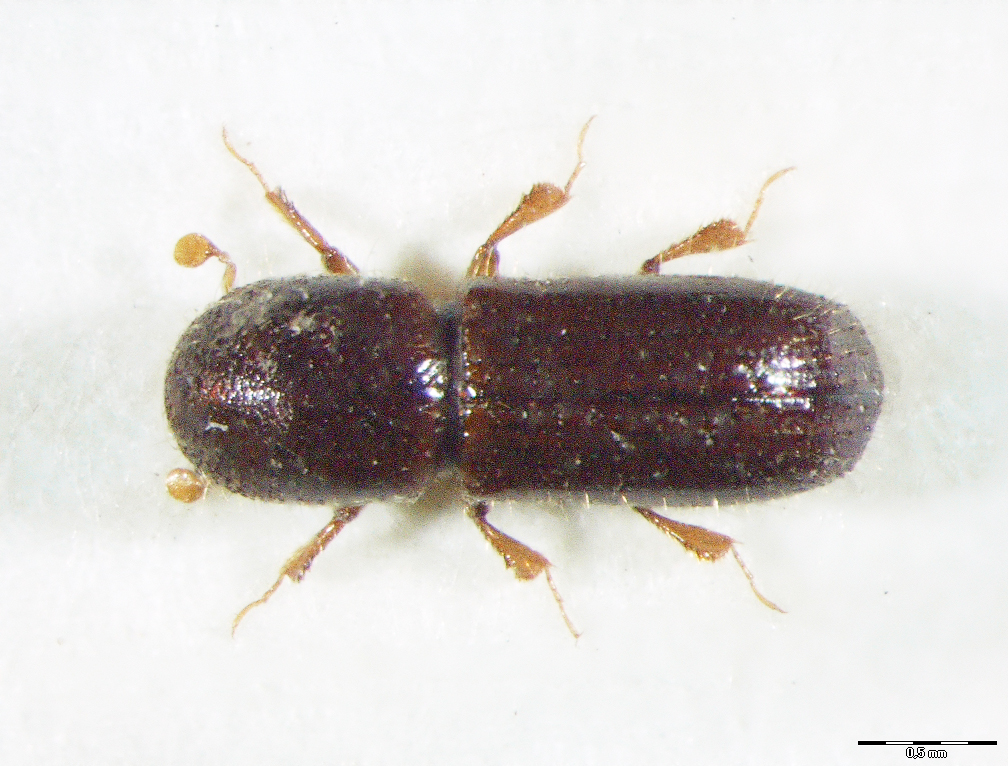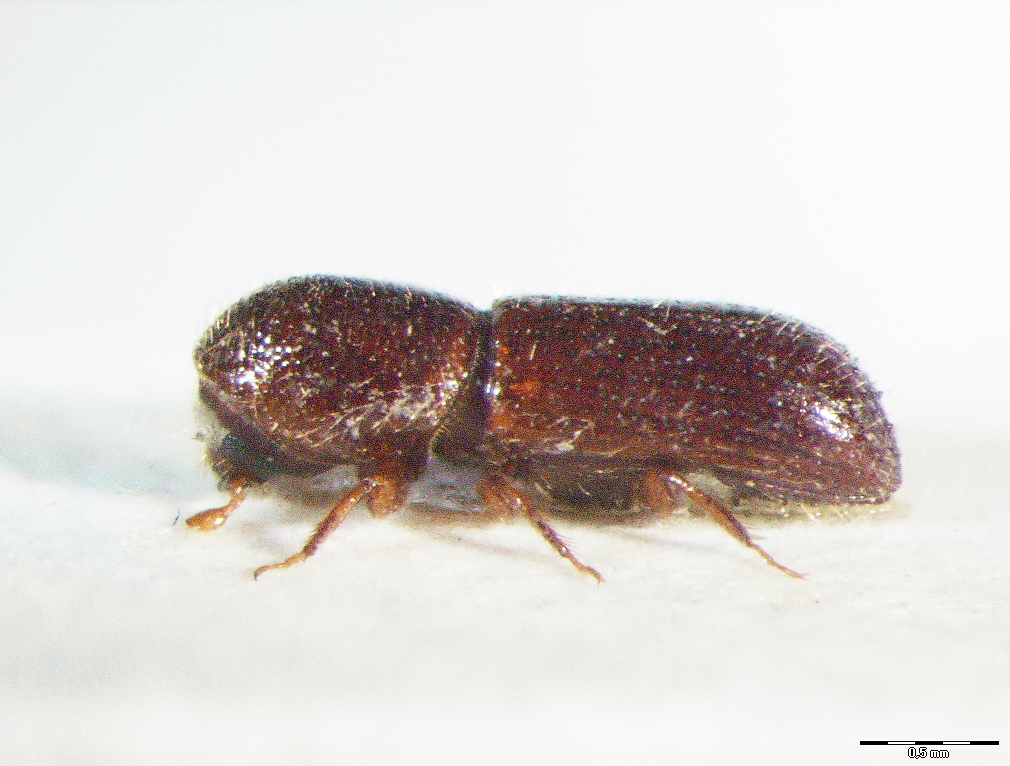37.02. Xyleborus dryographus (Ratzeburg, 1837)
Presence
E: AB AU BE BH BU CR CZ FR GB GE GR HU IT LU MC PL PT SK SL SP ST SZ UK YU
N: AG EG LB MO TU
A: IN IQ JA TR
Figure 174: Xyleborus dryographus, dorsal, lateral (Photo: Maja Jurc)
Older catalogs and keys – citations of name
Siegel 1866: Bostrychus dryographus Er.; Grüne 1979: Xyleborus dryographus Ratzeburg, 1837; Freude, Harde, Lohse 1981: Xyleborus dryographus Ratzeburg; Titovšek 1988: X. dryographus Ratzeburg; Pfeffer & Knížek 1993: X. dryographus (Ratzeburg, 1837); Pfeffer 1995: X. dryographus (Ratzeburg, 1837).
Figure 175: Xyleborus dryographus, distribution map according to historical and recent data
Ecology and presence in Slovenia
The species is distributed in Europe, North Africa and Asia (Asia Minor, Japan). Siegel (1866) states that the species was “rare in Carniola, in oak wood”. A common species in Slovenia, it has been recorded everywhere except in Koroška and Prekmurje (Figure 175). Hosts are Quercus robur and Q. petraea, less frequently Fagus sylvatica, Aesculus hippocastanum, Carpinus spp., Acer spp., Ulmus spp., Tilia spp. and Prunus laurocerasus. Recent records are the result of ethanol trapping. Males are 1.9-2.0 mm long and females 2.1-2.7 mm. All the interspaces on the apex are equipped with rows of small denticles (Figure 174). A xylomycetophagous species, it develops two generations a year, swarming in May and July. They build a fork-shaped tunnel system consisting of a radial entrance canal from which the maternal galleries branch off in different directions.



